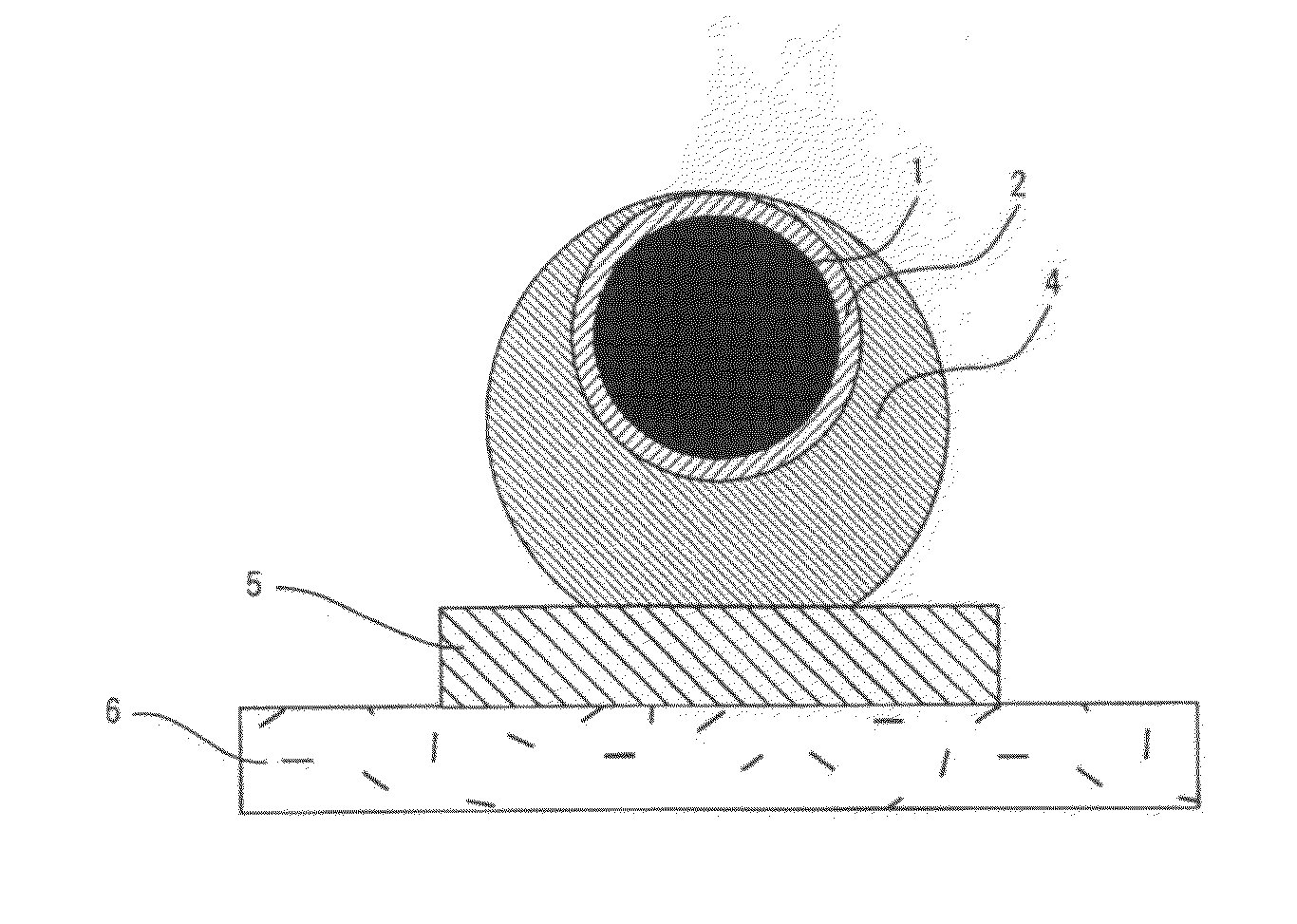Electroconductive fine particles, anisotropic electroconductive material, and electroconductive connection structure
a technology of anisotropic electroconductive material and fine particles, which is applied in the field of fine particles, can solve the problems of difficult to improve the packaging density of the ic or the lsi by using soldering, and the failure of the soldering to connect the ic or the lsi to the printed substrate efficiently, and achieves the effect of avoiding disconnection and avoiding disconnection
- Summary
- Abstract
- Description
- Claims
- Application Information
AI Technical Summary
Benefits of technology
Problems solved by technology
Method used
Image
Examples
example 1
(1) Production of Resin Fine Particle
[0108]An amount of 50 parts by weight of divinylbenzene and an amount of 50 parts by weight of tetramethyrolmethane tetraacrylate were copolymerized so that a resin fine particle (average particle diameter of 240 μm, CV value of 0.42%) was produced.
(2) Production of Conductive Fine Particle
[0109]Electroless nickel plating was carried out on the obtained resin fine particle to form a base nickel plating layer having a thickness of 0.3 μm on the surface of the resin fine particle. Subsequently, nickel electroplating was carried out on the resin fine particle with the base nickel plating layer formed thereon, so that the thickness of the base nickel plating layer became 5 μm. By further carrying out gold immersion plating, a gold layer having a thickness of 2 μm was formed. Furthermore, by carrying out electroplating, a solder layer, which has a thickness of 25 μm and contains tin and silver, was formed. Next, the electroplating solution was filtrat...
example 2
[0119]Electroless nickel plating was carried out on the resin fine particle produced in Example 1 and a base nickel plating layer having a thickness of 0.3 μm was formed on the surface of the resin fine particle. Then, copper electroplating was carried out on the resin fine particle, in which the base nickel plating layer was formed, and a copper layer having a thickness of 10 μm was formed. Further, by carrying out electroplating, a solder layer, which has a thickness of 25 μm and contains tin and silver, was formed. Subsequently, the electroplating solution was filtrated, and the obtained particle was washed with water and then dried in the vacuum dryer at a temperature of 50° C. Thus, the conductive fine particle was obtained, in which a copper layer and a solder layer were sequentially formed on the surface of the resin fine particle.
[0120]An amount of 1.5 g of the conductive fine particle, in which a copper layer and a solder layer were sequentially formed on the surface of the...
example 3
[0122]A conductive fine particle, in which nickel was adhered to the surface of the solder layer, was obtained in the same manner as in Example 2, except that the solution temperature of the electroless nickel plating solution was changed to 40° C. and the plating reaction time was changed to eight minutes. An average particle diameter of the conductive fine particles was 310 μm and a CV value was 1.02%.
[0123]The conductive fine particle, in which nickel was adhered to the surface of the solder layer, was analyzed with use of a fluorescent X-ray analyzer (EDX-800HS, produced by SHIMADZU CORPORATION) to find that the contents of the respective metals were 1.2% by weight of silver and 0.2% by weight of nickel, with the remainder being tin, with respect to the total of the metal contained in the solder layer and the adhered nickel.
PUM
| Property | Measurement | Unit |
|---|---|---|
| diameter | aaaaa | aaaaa |
| conductive | aaaaa | aaaaa |
| weight | aaaaa | aaaaa |
Abstract
Description
Claims
Application Information
 Login to View More
Login to View More - R&D
- Intellectual Property
- Life Sciences
- Materials
- Tech Scout
- Unparalleled Data Quality
- Higher Quality Content
- 60% Fewer Hallucinations
Browse by: Latest US Patents, China's latest patents, Technical Efficacy Thesaurus, Application Domain, Technology Topic, Popular Technical Reports.
© 2025 PatSnap. All rights reserved.Legal|Privacy policy|Modern Slavery Act Transparency Statement|Sitemap|About US| Contact US: help@patsnap.com



